
By Wang Taiping from Huawei
Purpose-built for mission-critical businesses, OceanStor Dorado V3 all flash storage system delivers high performance, reliability, and efficiency augmented by FlashLink technology.
- Innovative FlashLink technology: enables 0.5 ms stable latency and 3-fold better storage performance than that of traditional storage.
- HyperMetro gateway-free active-active design: provides smooth business migration to DCs in geo-redundant mode and solution-level 99.9999% availability, with RPO = 0 and RTO ≈ 0.
- Inline deduplication and compression function: helps Huawei storage claim 3:1 data reduction guarantee (depending on application and configuration) and reduce TCO by 75%.
Huawei OceanStor Dorado V3 fully satisfies the high performance, reliability, and efficiency requirements of mission-critical database services and virtualization efforts, smoothing the way for customers in finance, manufacturing, telecom, and other sectors in the all-flash era.

Database acceleration scenario (Oracle OLTP)
Oracle database hardware applications are the most widely used series by large enterprises. However, today’s information explosion poses great challenges to the performance and costs of Oracle systems.
1. Stacking of devices
Large e-commerce and banking systems process more than 100 million transactions per day. Core business systems perform in excess of 200,000 IOPS while keeping the latency within only 1 to 3 ms. However, traditional storage systems simply stack more devices to achieve increases in performance.
2. Business continuity
Oracle OLTP carries mission-critical businesses for enterprises, remaining unchanged pursuit of business continuity.
3. Increasing costs for Oracle licensing
Oracle licensing costs account for a significant portion of the O&M costs in enterprise IT systems. For example, a database with 10 TB of capacity could cost an enterprise as much as 50% of its yearly maintenance budget. As data volumes increase, the annual licensing costs would also continue to rise. Reducing the licensing costs for Oracle applications is a top concern for enterprises.
Not having enough storage performance could stunt the growth of the enterprise, while not having disaster recovery capabilities in place could jeopardize the entire operation.
Huawei Dorado provides high performance, robust continuity assurances, and reduced TCO, ensuring the mission-critical OLTP services of the enterprise remain online while adding new degrees of efficiency in operations.
Huawei all-flash Oracle database (OLTP) solution
The intense performance of the Huawei all flash storage solution powered on OceanStor Dorado V3 doubles online transaction efficiency while keeping latency down to a stable 0.5 ms, minimizing wait times, and improving resource utilization of storage and server assets. Many enterprises have seen a 50% reduction in Oracle licensing costs. The scale-out layout allows for easy, linear expansion. Capacity increases are predictable and scale-outs can be implemented in nearly no time, allaying enterprise concerns over the unpredictability factors in service growth. The Huawei offerings going into the solution provide a rich catalog of data protection services, ensuring that mission-critical applications remain online 24/7.

Huawei all-flash Oracle database (OLTP) solution
Highlights
1. More than 1.5 times faster performance than that of other all-flash storage
After tested by using the simulated system for Oracle database online transaction, a dual-controller OceanStor Dorado V3 system can provide stable performance of 210, 000 IOPS at 0.5 ms latency, 10 times higher than that of traditional storage and 1.5 times than that of XtremIO X2.

2. Complete DR solution
OceanStor Dorado V3 with the active-active HyperMetro gateway-free feature enabled achieves 99.9999% high availability for mission-critical businesses. The gateway-free attribute of the solution reduces the possible points of node failure, simplifies the networking, minimizes frequency of error from manual operations, and improves overall system reliability. The active-active architecture is able to balance loads and execute seamless service switching.

3. Lower Oracle licensing costs
The ultra-low latency on Dorado V3 reduces the wait time for CPU I/Os and effectively lowers CPU usage. Under the same workload, using less CPU resources helps increase processing speeds and lower Oracle licensing fees. As the figure shows, compared to traditional storage, OceanStor Dorado V3 storage reduces the CPU usage by about 50%.

Comparison of server CPU usage in Oracle scenarios between traditional storage and OceanStor Dorado V3
VDI scenario (VMware)
Terminal management and delivery services are rather time-intensive and costly in traditional office layouts dominated by PCs. Virtual desktop infrastructures (VDIs) have become widely adopted in enterprise IT systems thanks to the ability to deliver, protect, and manage Windows-based or Linux-based desktops and applications on premise or in the cloud all while controlling costs. Adding to the luster, users are able to work from any location and at any time they chose. However, the availability, performance, and maintenance requirements on centralized deployment of VDI systems are much higher than that of the traditional PC environment.
1. High costs
The VMware desktop solution claims the annual costs in typical use cases (30 GB system disks, 10 GB data disks) is $699 USD for skilled users, which is higher than the traditional office solution. The investment into storage in the VDI solution accounts for 25 to 40% of the total, a big cost consideration to adopting such a layout.
2. Time-consuming O&M
Deploying a VDI environment for 2000 users takes over 20 hours with traditional storage and it takes considerable time to perform expansions. When emergency situations require patching, it can take over 10 hours to install the patches and perform the restarts for 2000 desktops, causing serious impact to daily operations.
3. User experience gap between virtual desktops and PCs
The traditional VDI solution delivers response time of about 5 to 10 seconds to open a slide, Word, Excel, and other files.
Compared to traditional storage devices, the Huawei OceanStor Dorado VDI solution provides a new balance among high performance, service continuity, and efficiency.
Huawei VDI solution
Huawei OceanStor Dorado V3 all-flash storage provides industry-leading performance and low latency, ensuring quick maintenance of VDI systems and good customer experience. The rich store of DR solutions available with the Dorado fully satisfies different reliability requirements. With the inline data reduction function enabled, TCO is significantly reduced in VDI environments.
Highlights
The following testing indicates the experience differences between Huawei OceanStor Dorado V3 and traditional storage arrays in common VDI scenarios.

Comparison of the best practice data of mainstream products and test results of Huawei solution is shown as follows:
1. More than 30% lower cost per desktop
Comparing the single desktop cost among OceanStor Dorado V3, XtremIO, and traditional storage, it can be seen that OceanStor Dorado V3 outperforms XtremIO with the same 5:1 deduplication and compression ratio, while traditional storage did not enable this function. More than 30% of costs can be reduced when over 1000 desktops are operating.

Single desktop cost comparison (USD)
2. High O&M efficiency
OceanStor Dorado V3 storage reduces the time to deploy 2000 desktops from 20 hours to 8 hours compared to traditional storage and lowers the startup storm time by 75% (60 minutes to 15 minutes).
 3. Better user experience
3. Better user experience
Compared to traditional storage, the response time to open office applications is shortened by 50%.

Scalable VDI storage solution

Server virtualization scenario (VMware)
Storage is the biggest bottleneck for a system to achieve centralized business deployment and maximum resource utilization. However, the server virtualization technology can dramatically improve the IT efficiency and elasticity for enterprises. Huawei all-flash storage can cope high performance challenges in server virtualization scenarios, enabling enterprises to avail themselves of the advantages.
1. Business integration
In terms of service requirements, everything from applications being carried, capacity, and performance are all on the sharp rise, making the consolidation and expansion capabilities of the virtualization platform all the more important. The common services carried on virtualized servers include Microsoft services, databases, Web applications, and OA. During peak usage hours, the loads on applications range from 2000 to 5000 IOPS/TB while that during moderate usage ranges from 500 to 1000 IOPS/TB. The performance density of traditional storage is 300 to 500 IOPS/TB, leaving much to be desired in terms of performance and capacity in the new environments.
2. Business continuity
A unified platform with multiple businesses has higher business continuity requirements than those of independent apps. Therefore, service continuity must be supported in virtualization scenarios. For VMware, its DR solution provides the SRM stretched active-active design.
3. Development and testing
The development and test system of virtualization platforms needs to quickly copy and access production data without adverse impact to production services. Use of LUN cloning in traditional storage is time-intensive, taking about 30 minutes to copy 10 TB of data and lowering processing capabilities in production services by 30% or more.
4. Cost reduction
Each VM in a virtualized environment takes up system resources. Resource utilization in storage needs to be improved and reduction in redundant data in the system helps lower TCO.
The Huawei server virtualization solution delivers both high performance and top levels of service continuity while reducing TCO for the enterprise.
Huawei server virtualization solution
Huawei OceanStor Dorado V3 all-flash storage provides powerful performance, supports large-scale service integration and ultra-low latency, and handles high performance density in server virtualization scenarios and the business pressure in multi-business scenarios. At the same time, Huawei solution supports active-active design with VMware SRM stretched storage to build an end-to-end high-availability virtualization platform.
Based on the thin provisioning and inline data reduction technologies, OceanStor Dorado V3 reduces costs of virtualization infrastructure platform, saves equipment room footprint and power consumption, and lowers TCO.
Highlights
1. Three times better business integration capability, with VMs bearing mission-critical business
OceanStor Dorao V3 improves the performance density by three times compared to traditional storage, and by twice compared to XtremIO X2. OceanStor Dorado V3 delivers better performance in heavily-loaded virtualization scenarios and supports 500 IOPS/100 GB for a single VM.

2. Support for VMware SRM stretched storage active-active layouts
Service continuity: Huawei gateway-free active-active solutions have acquired certification from VMware SRM Stretched Storage.

3. Three times higher development and testing efficiency based on lossless snapshots
Traditional development & test: three complete copies of data, slow speed, and high space occupation rate
Dorado V3 development & test: Lossless snapshot (no need for copying) occupies small volume of space and executes operations with zero impact to production services.
SAP HANA TDI solution
SAP HANA is a high-performance in-memory database platform launched by SAP SE. It aims to help enterprises analyze and process large amounts of data in real time and seize business opportunities. According to Gartner, a well-known third-party advisory firm, more than 100,000 SAP customers will be upgraded from traditional databases to SAP HANA databases by 2020, accounting for more than 35% of SAP users.
Although SAP HANA accelerates large-scale service innovation, SAP HANA has certain requirements for the legacy data center architecture.
1. Data center architecture
SAP HANA mainly employs the soiled construction model, bringing business island, low resource utilization, and complex business expansion. This is contrary to the trend of migrating businesses to the cloud for mainstream data centers.
2. DR and backup building
In SAP HANA appliance mode, the DR of SAP applications and database cannot be deployed in a unified manner. The database adopts software-based DR while the application adopts virtualization- and storage-based DR. The management, maintenance and DR operations are complex, which cannot ensure data consistency and cannot meet the requirements in large-scale data center scenarios.
3. Business maintenance process
Traditional databases use advanced functions of storage systems to provide data services. The SAP HANA platform supports internal enterprise businesses, involving dozens and hundreds of sub-service systems which demand for extensive development, testing, rollout, and positioning. Business innovation requires rapid release of development and testing, and sandbox systems. However, the SAP HANA system without snapshot function takes a long time to have required full copy testing for each new business rollout and upgrade. Each operation needs to be coordinated by multiple layers, such as application and hardware layers. Many operation steps make it difficult for hardware administrators to handle.
The preceding challenges are especially prominent in cloud-based data centers and in the evolution from traditional databases to the SAP HANA, making it a major challenge for enterprises to use SAP HANA system.
Huawei’s SAP HANA TDI solution
With the maturity of SAP HANA, hardware faces fewer restrictions than before. To better integrate SAP HANA into existing data centers of enterprises, SAP launches Tailored Datacenter Integration (TDI) reference architecture to integrate SAP HANA database more flexibly into existing data centers.
Huawei’s SAP HANA TDI is a solution designed based on Huawei’s powerful hardware capabilities and integration capabilities of the TDI solution. Compared to other vendors’ solutions, it has the following three features:
Scalable: SAP businesses require high hardware performance. The higher the performance is, the more HANA nodes are carried. In addition, the preceding performance data takes effect only after being certified by SAP. Huawei’s outstanding performance in all-flash storage has been recognized by SAP. In the latest SAP certification, Huawei’s high-end all-flash storage system supports a maximum of 200 SAP HANA nodes, ranking top in the industry.
Reliable: Huawei all-flash storage can still meet SAP’s high performance (1 ms latency) requirements after enabling the active-active design. Therefore, Huawei’s SAP HANA TDI solution can provide end-to-end SAP HA solutions that satisfy SAP performance requirements.

Huawei’s SAP HANA TDI solution
Efficient: With the lossless snapshot function, Huawei’s SAP HANA TDI solution can quickly set up the development, testing, and sandbox systems. Response time to the business environment setup is reduced from 10 hours to 20 minutes compared to traditional solution.
Huawei is the first storage vendor that puts NVMe into commercial use. Designed for enterprises’ heavily-loaded critical applications, Huawei’s all-flash storage meets storage requirements of enterprise-class applications such as databases, virtual desktops, and server virtualization, perfectly matching solid-reliability and high-performance standards in SAP HANA scenarios to build an industry-leading SAP HANA TDI solution.
The post Huawei OceanStor Dorado V3 All-Flash Solutions, Built for Your Application Scenarios appeared first on Huawei Enterprise Blog.
Source: Huawei Enterprise Blog
—
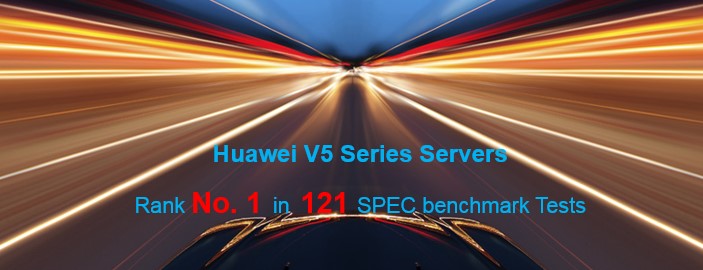





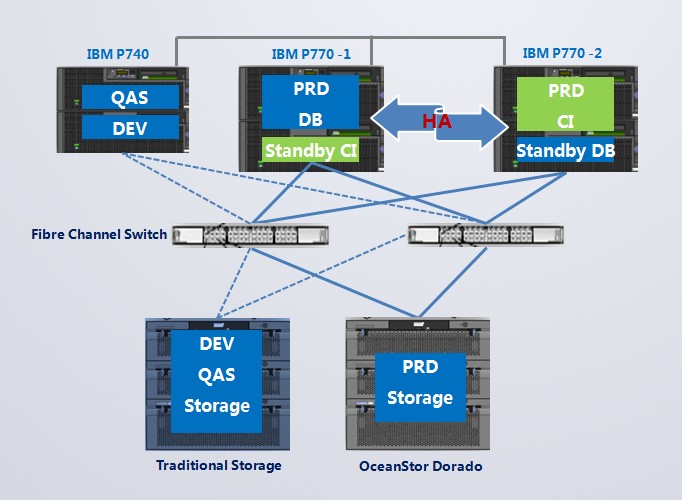


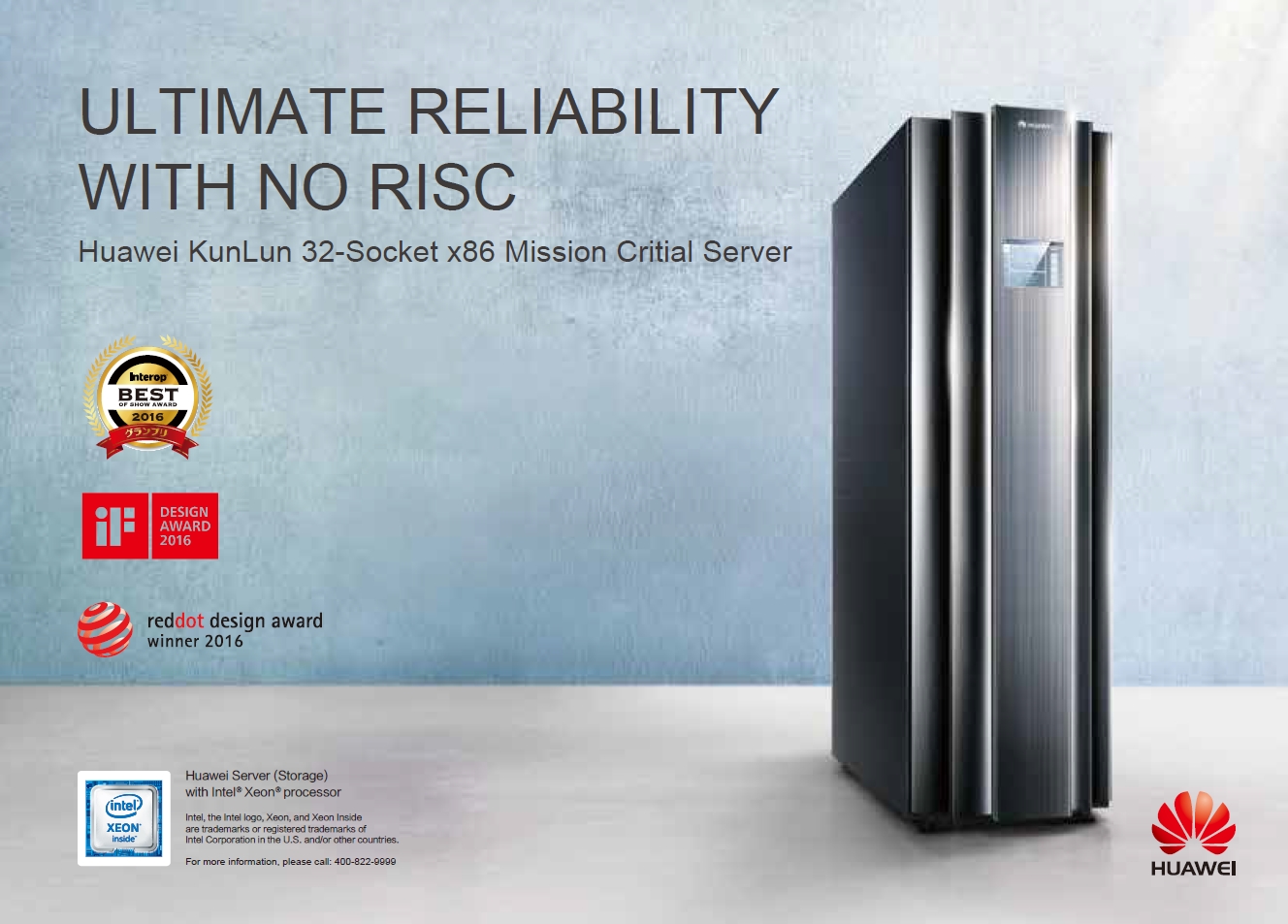


 Source:
Source: 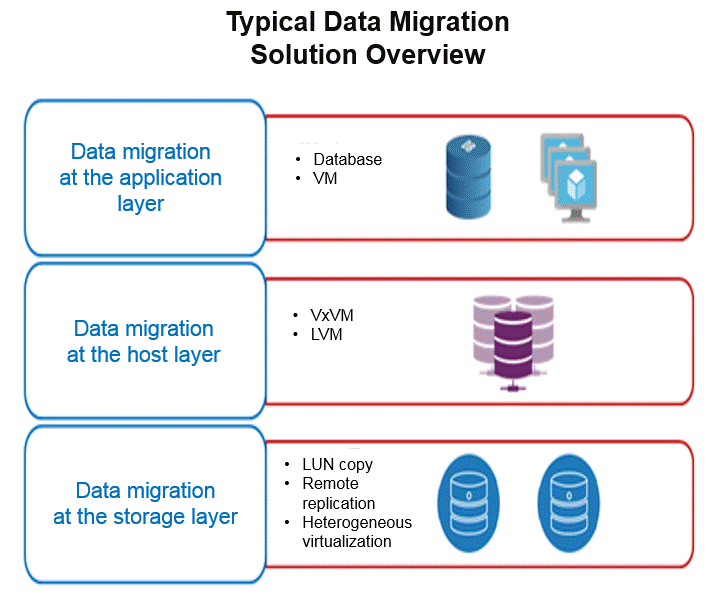





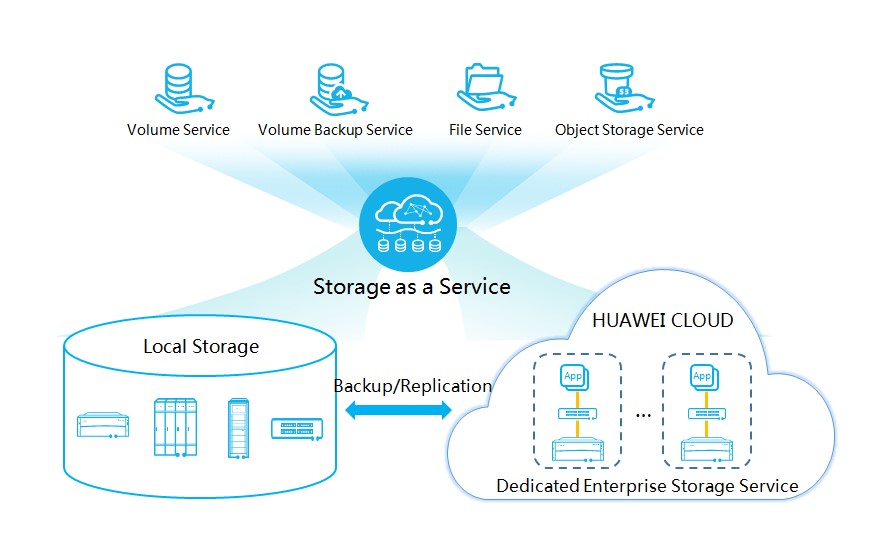









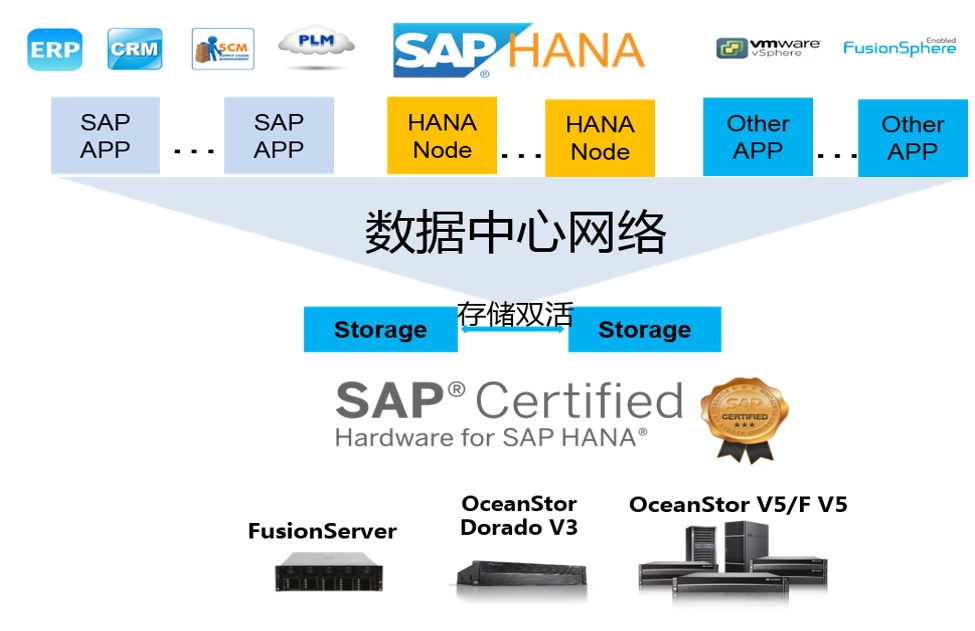








 3. Better user experience
3. Better user experience


